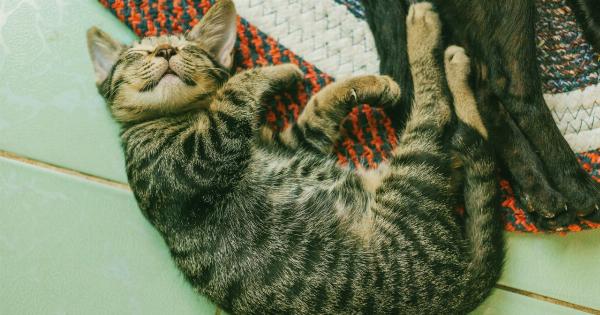Getting a good night’s sleep is essential for overall well-being and health. While many factors can affect the quality of your sleep, surprisingly, your choice of sleepwear can play a significant role in promoting a restful slumber.
In this article, we will explore the different options available for dressing for sleep and highlight what works best for a good night’s sleep.
The Importance of Comfort
When it comes to selecting sleepwear, comfort should be your top priority. Your sleepwear should allow your body to move freely without any restrictions or discomfort.
Loose-fitting clothing made from breathable materials such as cotton or bamboo are excellent options. These fabrics help keep your body cool and allow air circulation, preventing overheating and sweat accumulation that can disrupt your sleep.
Consider the Weather
The weather and temperature of your bedroom can also influence your sleep quality. During colder months, you may opt for sleepwear that provides more warmth, such as pyjamas or flannel nightgowns.
On the other hand, in hotter climates or during the summer season, you may benefit from lightweight and moisture-wicking fabrics that help you stay cool and dry throughout the night.
Choosing the Right Fit
The fit of your sleepwear can greatly impact your comfort levels during sleep. Avoid tight or restrictive clothing that can cause discomfort and disrupt your sleep. Opt for sleepwear that allows for natural movement and doesn’t constrict your body.
Additionally, consider the length and style that suits your preferences and body shape. Whether you prefer full-length pyjamas, nightgowns, or shorts and t-shirts, choose what makes you feel most comfortable and relaxed.
The Benefits of Natural Fabrics
Choosing sleepwear made from natural fabrics, such as cotton or bamboo, offers several benefits. These fabrics are breathable, hypoallergenic, and gentle on the skin, reducing the likelihood of irritation or allergic reactions.
Furthermore, natural fabrics are known for their moisture-wicking properties, allowing them to absorb and evaporate sweat, keeping you dry and comfortable during the night.
Consider Sleepwear for Temperature Regulation
If you struggle with temperature regulation during sleep, you may consider sleepwear designed specifically for this purpose.
Innovative sleepwear options are available with advanced technology that helps to regulate body temperature by either trapping heat during colder nights or cooling you down during warmer nights. These garments often incorporate phase-change materials or moisture-activated cooling technologies to help maintain a comfortable body temperature throughout the night.
Restrictive vs. Loose Sleepwear
Some individuals prefer tighter sleepwear for a sense of security or to prevent tangling during sleep. However, it is essential to strike a balance between comfort and any potential restrictions.
While looser sleepwear allows for more freedom of movement, restrictive sleepwear, like compression garments or snug-fitting sleep shirts, can offer therapeutic benefits for certain medical conditions like restless leg syndrome or poor circulation. Consult with your healthcare provider if you are unsure which option would be best for you.
The Role of Color and Texture
Believe it or not, the color and texture of your sleepwear can impact your sleep quality. The general rule of thumb is to choose soft, muted colors or pastels that promote relaxation and a calm state of mind.
Avoid bright, vibrant colors that might be stimulating or disruptive to your sleep. Additionally, consider the texture of your sleepwear – opt for smooth, comfortable materials that enhance the overall comfort and coziness of your sleep experience.
The Case for Sleeping Nude
For some individuals, sleeping in the nude provides the ultimate comfort and freedom during sleep. Sleeping without any clothing allows for better airflow and temperature regulation, reducing the risk of overheating.
Additionally, it allows the body to release any excess moisture, minimizing the chances of developing irritation or infections. However, it is essential to consider personal preferences and comfort levels when deciding whether to sleep nude.
Pajamas vs. Nightgowns vs. Sleep Shirts
Choosing between pajamas, nightgowns, or sleep shirts is a matter of personal preference. Pajamas typically consist of a combination of matching tops and bottoms, providing optimal coverage and warmth.
Nightgowns offer an elegant and feminine option, often made from breathable fabrics and varying lengths. Sleep shirts or oversized t-shirts provide a more casual and relaxed choice, offering comfort and easy movement during sleep. Experiment with different options to determine what works best for you.
Sleepwear for Special Circumstances
In certain situations, you might require sleepwear tailored to specific circumstances. For instance, pregnant women may benefit from maternity sleepwear designed to accommodate their growing bellies and provide support in all the right places.
Breastfeeding mothers can opt for nursing sleepwear with easy access for nighttime feeds. Additionally, individuals with night sweats or hot flashes can explore sleepwear options with moisture-wicking properties to manage excessive sweating during sleep.
Conclusion
It is often overlooked how significant an impact sleepwear can have on the quality of your sleep.
Considering that we spend a significant portion of our lives in bed, it is worth investing in sleepwear that promotes comfort and supports a restful slumber. Remember to prioritize loose-fitting clothing made from breathable fabrics, consider the weather and temperature, and choose sleepwear that aligns with your personal preferences and comfort levels.
By dressing for sleep in the most suitable attire, you can optimize the conditions for a well-deserved night of rejuvenating rest.































